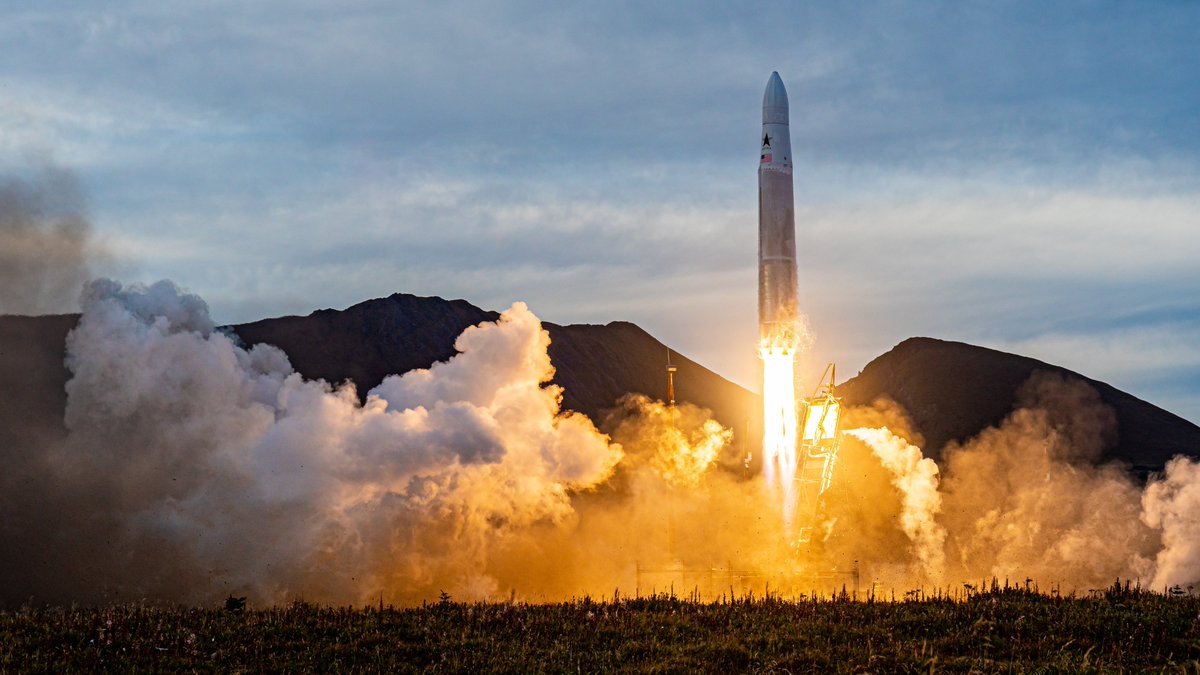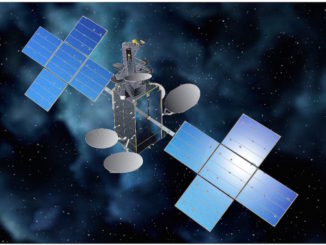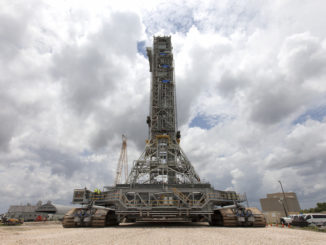
Astra officials said Saturday a software fix will likely resolve a guidance system problem that caused the company’s first orbital-class rocket to begin drifting off course soon after liftoff from Alaska Friday night, prompting a range safety officer to terminate the mission.
Astra’s Rocket 3.1 launch vehicle took off from the Pacific Spaceport Complex on Kodiak Island, Alaska, at 11:19 p.m. EDT Friday (7:19 p.m. Alaska time; 0319 GMT Saturday).
Around 30 seconds later, the rocket’s five stage engines shut down and the 38-foot-tall (11.6-meter) rocket fell back to the ground and exploded on impact in a part of the spaceport that was cleared of personnel before launch.
The result was not unexpected after Astra officials set modest goals for the test flight. The private space company — headquartered in Alameda, California — said it planned a series of three test launches before it expects to reach orbit with its commercial rocket.
“We said back earlier this year it would probably take about three flights to reach orbit,” said Chris Kemp, Astra’s co-founder and CEO. “This first flight, we learned a lot. We have a tremendous amount of data. We’re really pleased that the rocket flew, and we collected a ton of data. We still have a lot of work to do to reach orbit, and we believe that our next flight will take us one more big step in that direction.”
Kemp said Astra’s engineers were “incredibly excited” for Friday night’s test flight.
“We saw a beautiful launch last night,” he said Saturday. “It was our first orbital launch (attempt).”
Adam London, Astra’s co-founder and chief technology officer, said Saturday that the Rocket 3.1 vehicle performed well in early portion of the flight after lifting off from a mobile launch pad on Kodiak Island.
“However, our guidance system appeared to introduce some slight roll oscillations into the flight, which caused the vehicle to drift from its planned trajectory enough that the ground issued a commanded shutdown of the engines via the flight safety system,” London said.
“So the engines shut down, and then the rocket landed in a safe area,” London said in a virtual press conference Saturday. “Never were there concerns about safety. It remained fully within the controlled and expected area throughout the whole time.”
Astra uses a thrust termination for its range safety system, similar to the design of flight safety systems used on many international rockets. The Federal Aviation Administration, which regulates commercial launches by U.S. companies, approved the plan in its launch license for Astra.
Kemp said an explosive destruct system, such as those used by large rockets launching from other U.S. spaceports, is not required for Astra because of the small size of its launcher.
“We can actually just cause the rocket to safely land within the safety area by commanding the engines to stop,” he said. “That’s a very effective technique.”
Volume up! Rocket 3.1’s orbital launch attempt pic.twitter.com/nm1bDewdl5
— Astra (@Astra) September 12, 2020
Based on “very early indications,” London said that the solution to address the guidance system issue is likely to be a software fix, “which gives us hope that we’ll be able to return to flight fairly quickly.”
“If it’s a software update, that puts us on track to be up real soon,” Kemp said Saturday.
London said telemetry from rocket indicated the guidance system was beginning to correct the roll oscillation when the range safety officer sent the flight termination command. The company plans to recover and catalog debris from the rocket that fell near the launch pad.
Astra has a little more than 100 employees, Kemp said. The company aims to mass-produce small satellite launchers that can be deployed to spaceports around the world on short notice. A crew of six was able to set up the rocket’s and all its ground infrastructure at Kodiak before Saturday’s launch.
Astra officials said in July that the company did not intend to hit a “hole-in-one” on the Rocket 3.1 test flight by accomplishing all the milestones necessary to climb into space and accelerate to orbital velocity.
“We intend to accomplish enough to ensure that we’re able to get to orbit after three flights, and for us that means a nominal first-stage burn and getting the upper stage to separate successfully,” Kemp said in a conference call with reporters in late July.
London acknowledged that Astra did not meet all of its objectives. “But we did gain a lot of valuable experience (and) incredibly valuable flight data,” he said Saturday.
“We do believe that this launch sets us up on our way to reach orbit within two additional flights,” London said. “In that sense, we’re happy that we had the opportunity to learn and keep going.”
Astra officials said the company could likely return to Kodiak to launch its next test flight — with a vehicle named Rocket 3.2 — before the end of the year.
“This outcome was actually, on the range of possibilities, a relatively good outcome,” Kemp said. “If we had flown this flight and the team looked at the data and realized we had to make a asjor hardware change — a change to the structure, a change if the engines weren’t working as expected — it could have taken many months of additional development before coming back to Alaska.
“We could have learned things that could have set us back six months or a year,” Kemp said. “What it appears is we have some additional calibration of our guidance system and software that we need to do for our next flight.”
Astra said all pieces of Rocket 3.2 have been manufactured at the company’s factory in California, and the next vehicle in line — Rocket 3.3 — is about 50 percent complete.
“Rocket 3.2 is here on our floor,” London said. “We just finished the last of the major components, so final assembly and testing is already underway. And the good news is early indications are that it doesn’t seem like there will be a lot of hardware changes required to return to flight.”
There were no customer satellites aboard the Rocket 3.1 test flight Friday night.
If it was carrying a payload, Rocket 3.1 could deliver 55 pounds (25 kilograms) of cargo into orbit, London said in July. Astra says it has a roadmap for more capable rockets, eventually aiming to build a launch vehicle to carry up to 330 pounds (150 kilograms) of payload into orbit.
Rocket 3.2 is largely the same as Rocket 3.1, London said. Engineers devised some changes to “either improve performance or improve reliability,” London said. Most of the changes on Rocket 3.2 are on the rocket’s second stage.
Kemp said in July that Astra is developing a launch service that is “a lot more affordable” than other small launch companies, such as Rocket Lab. Astra says it will be able to launch small satellites on short notice for the U.S. military and commercial companies.
“There just aren’t enough launches going to enough destinations on the schedules that are demanded by this new generation of small satellite payloads,” Kemp said.
The design of Rocket 3.1 was based on a launch vehicle named Rocket 3.0 that Astra sent to Kodiak earlier this year for a launch campaign that was part of the Defense Advanced Research Projects Agency’s Launch Challenge. The DARPA Launch Challenge, managed by the Pentagon’s research and development agency, was conceived to incentivize development of new responsive commercial U.S. launch systems.
The deadline for the first Astra mission under DARPA’s Launch Challenge was March 2. After several weather delays and other schedule slips in late February, Astra fueled its Rocket 3.0 vehicle at Kodiak on the final day of the challenge March 2.
But Astra scrubbed a launch attempt due to suspect data from a fuel tank during pressurization of the rocket’s propellant system for liftoff.
That ended Astra’s shot at winning the DARPA Launch Challenge, but the company resolved the problem and was preparing for another launch attempt with Rocket 3.0 later in March. However, an issue with a valve on the rocket led to an over-pressurization that destroyed the vehicle while Astra was draining propellants after a countdown rehearsal.
Founded in 2016, Astra is developing its small satellite launcher using an iterative process, in which engineers use test and flight data to make adjustments to the rocket’s design.
“Innovating on rockets has seemed to become a strategy to learn, innovate and get to space faster,” Kemp said. “We would have really preferred to fly back in March with the 3.0 rocket because we would have learned this lesson then, and then this 3.1 flight would have already incorporated those learnings and updates from that data.”
Email the author.
Follow Stephen Clark on Twitter: @StephenClark1.



